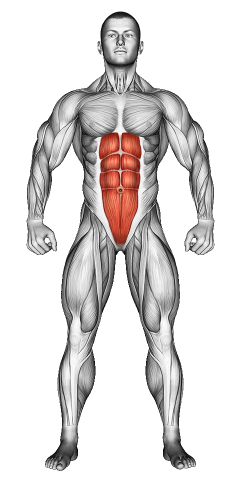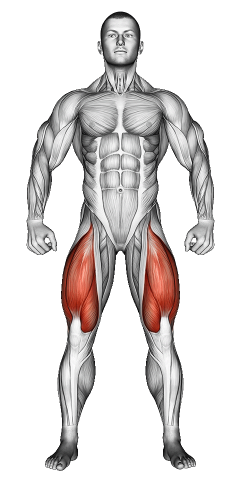High Knees: Video Tutorial & Exercise Guide

Written By: Claude Michael
Updated: Oct 13, 2024
| Workout | High Knees |
| Primary Muscle Group | Abs |
| Secondary Muscle Group | Quads |
| Equipment Required | Bodyweight |
| Force Type | N/A |
| Mechanics | Compound |
| Exercise Type | Cardio |
| Difficulty | Beginner |
High Knees: Video Tutorial & Exercise Guide
Secondary Muscles Group
High Knees: Step-by-Step Guide
- Step 1: Stand tall with your feet hip-width apart and your arms by your sides. Engage your core and look straight ahead.
- Step 2: Lift your right knee as high as you can, aiming to bring it to hip level or higher while driving your left arm forward.
- Step 3: Quickly switch, bringing your left knee up and your right arm forward, while your right leg returns to the ground.
- Step 4: Continue alternating knees and arms in a running-like motion, keeping your core engaged and maintaining a quick pace.
- Step 5: Perform for the desired time or number of reps, ensuring your movements are controlled and explosive.
High Knees: Overview
High Knees is a dynamic cardio exercise that combines the benefits of running in place with an intense knee drive. This movement increases heart rate, improves coordination, and works multiple muscle groups including the quads, hamstrings, glutes, and core.
It’s an excellent exercise for boosting cardiovascular endurance, improving lower body strength, and warming up the body before a workout. High Knees can be done anywhere, requiring no equipment, and are effective for both beginners and advanced athletes.
High Knees: Benefits
High Knees is a full-body cardio workout that significantly elevates your heart rate, making it ideal for improving cardiovascular fitness. It’s also a great way to burn calories and improve lower body muscle endurance.
The exercise strengthens your legs, glutes, and core as you lift your knees and engage your abdominal muscles to stabilize your body. Additionally, High Knees help improve agility, coordination, and speed, making it useful for sports training and functional fitness.
This movement is also a great way to increase flexibility and mobility in the hips as it requires a full range of motion with each knee drive.
High Knees: Pro Tips & Advanced Techniques
To get the most out of High Knees, focus on keeping a fast, explosive pace without sacrificing form. Keep your chest lifted, core engaged, and drive your knees as high as possible. For an added challenge, perform High Knees for longer intervals or add resistance by holding light dumbbells or wearing a weighted vest. Ready to boost your cardio and leg strength? Let’s get those knees up!
High Knees: Progression Plan
Beginner
Intermediate
Advanced
High Knees: Frequently Asked Questions (FAQs)
What muscles do High Knees target?
+High Knees primarily work your quadriceps, hamstrings, glutes, and calves. It also engages your core muscles to help stabilize your body during the movement.
How do High Knees help improve cardiovascular fitness?
+This is a high-intensity, dynamic movement that significantly elevates your heart rate, helping to improve cardiovascular endurance and burn calories.
Can beginners do High Knees?
+Yes, beginners can perform High Knees at a slower pace and focus on lifting their knees to a comfortable height. As they build endurance, they can gradually increase the speed and intensity.
How often should I include High Knees in my workout?
+Incorporate High Knees 2-3 times a week as part of your cardio or warm-up routine. It pairs well with other high-intensity exercises like jumping jacks or burpees.
What common mistakes should I avoid?
+Avoid leaning forward or backward and using your arms too much. Focus on keeping your chest up, core tight, and driving your knees explosively without compromising your form.
Share
Don’t Wish for It, Work for It – Join the FlexXP Newsletter Today!
Thank you for signing up for the FlexXP Newsletter!
This site is protected and the Google Privacy Policy and Terms of Service apply.

